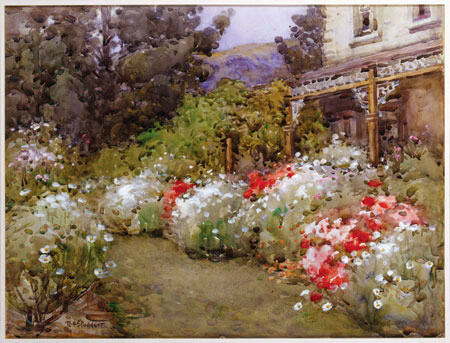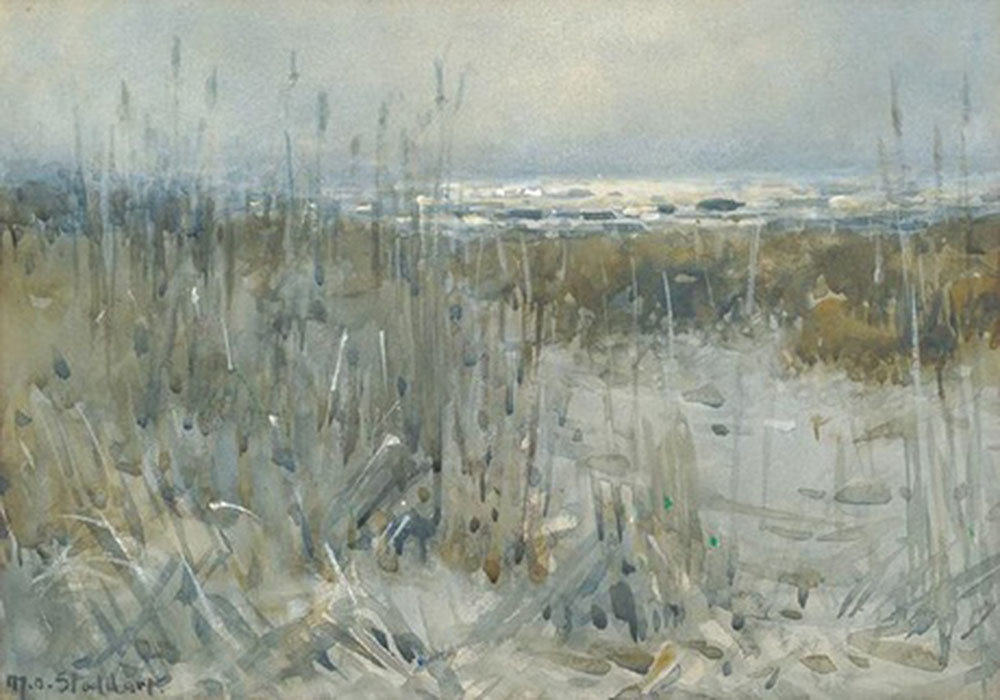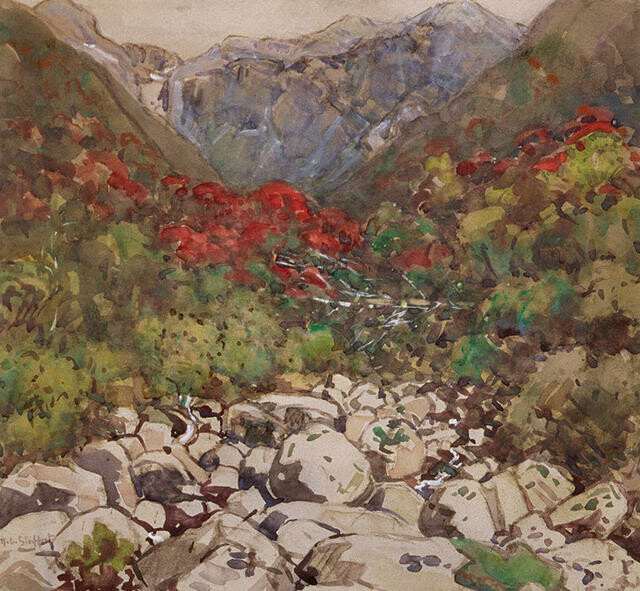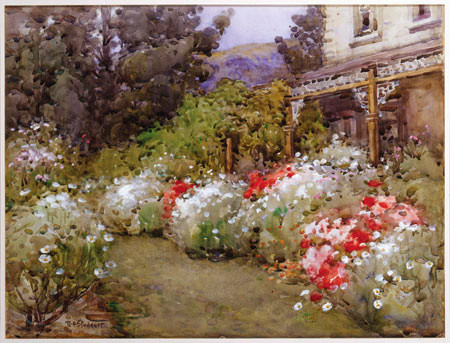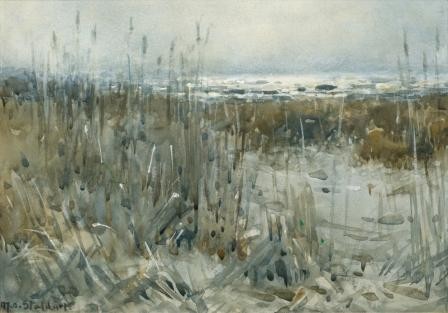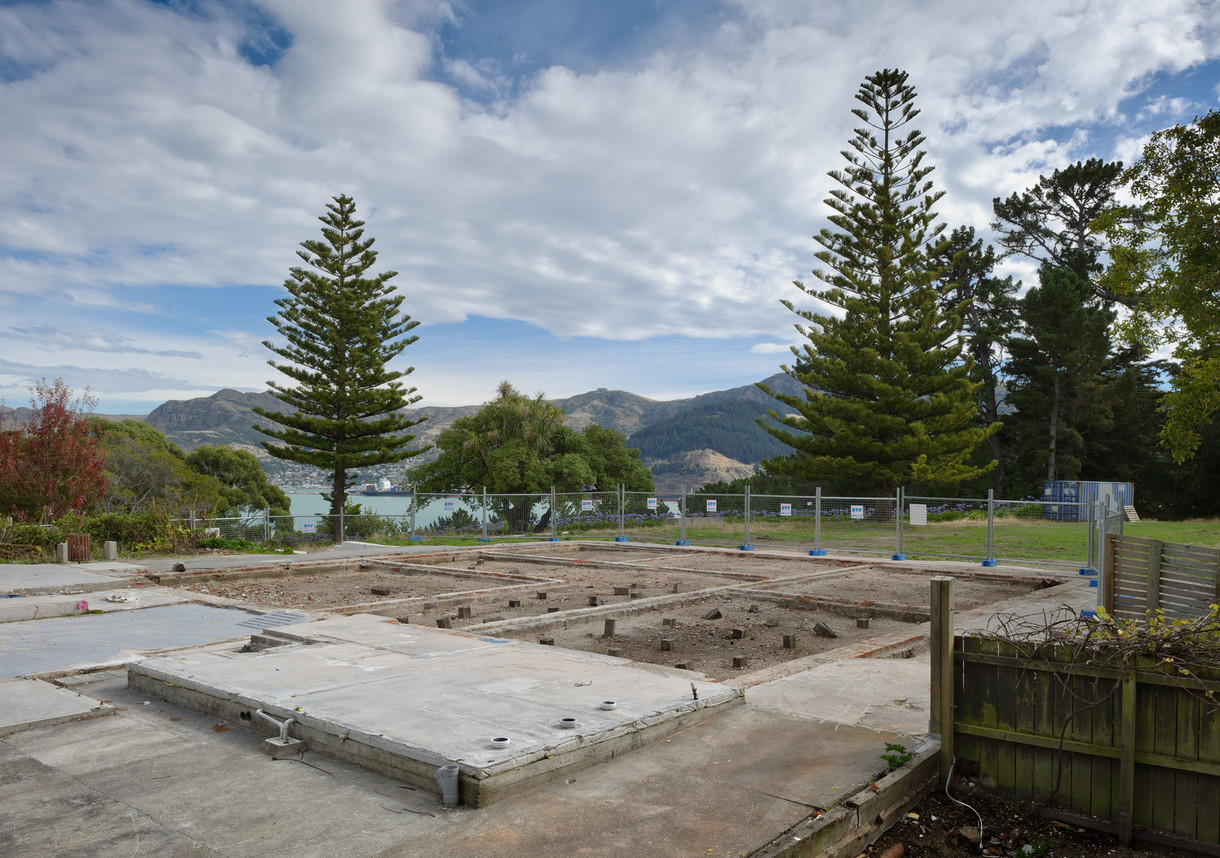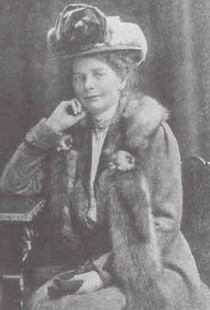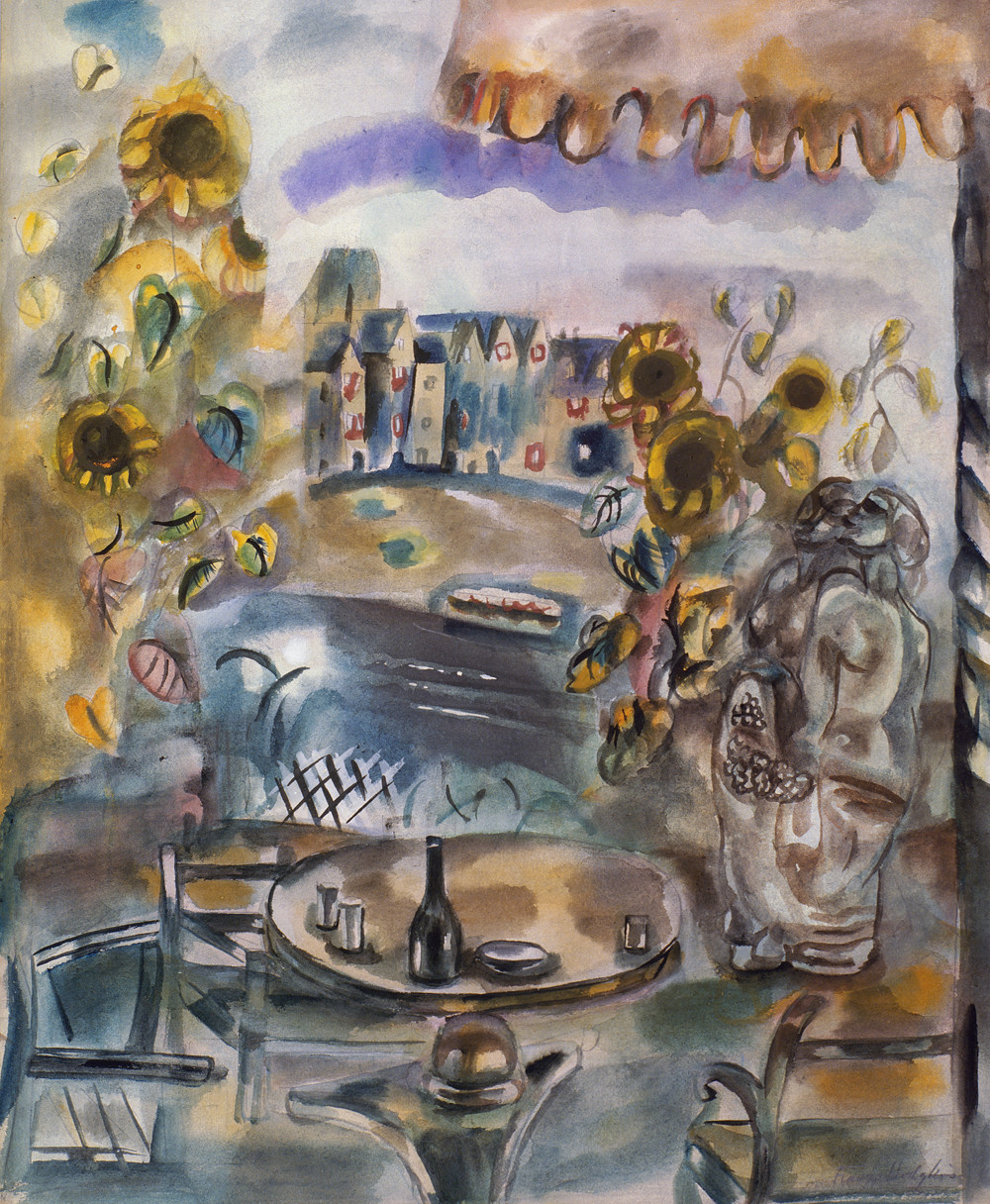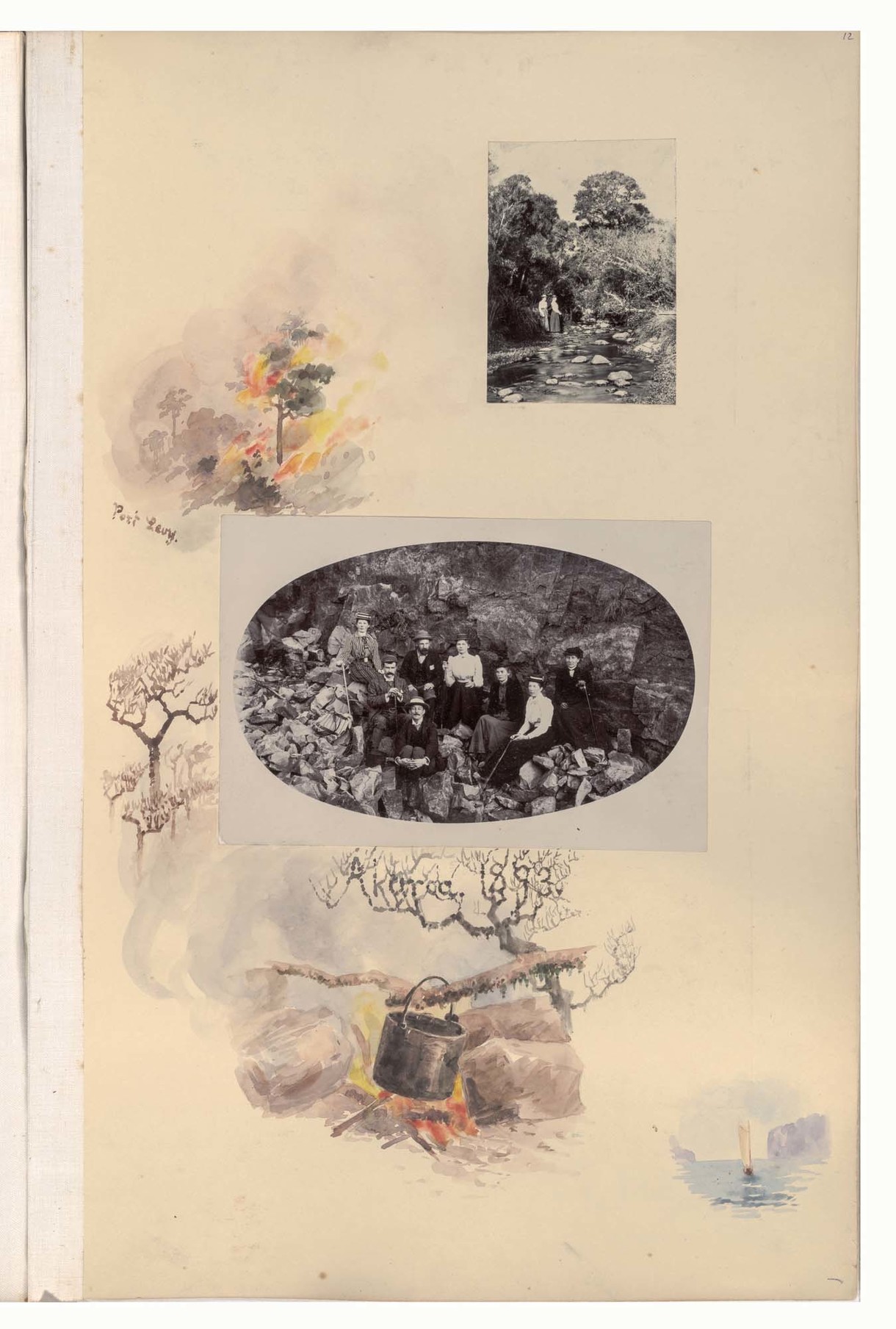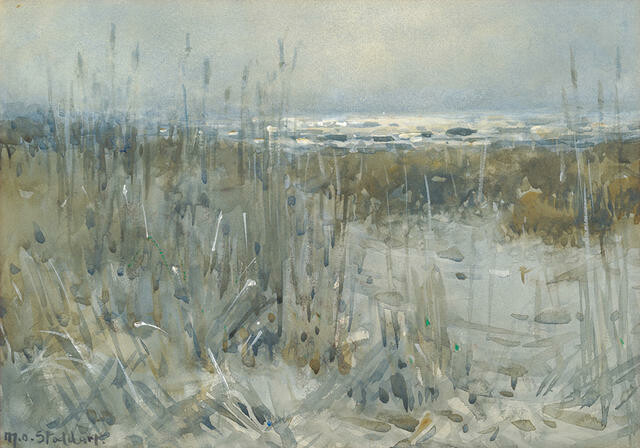B.
Godley House
Behind the scenes
The Press announced today that another iconic Banks Peninsula building is to be demolished, Godley House at Diamond Harbour.
It was quite shocking to see the damage sustained to the building from the Canterbury earthquakes in the aerial photograph reproduced in the paper. The brick house is a mess and unfortunately looks well beyond saving. The two story house with return verandas was originally built in 1880 by Harvey Hawkins on a stunning site that provides panoramic views across the harbour to Lyttelton.
However, the house's most famous association is with the popular Canterbury watercolourist, Margaret Stoddart (1865–1934) who lived there with her family in the early 1900s. The Stoddart family had a long association with Diamond Harbour, which began when Margaret's father, Mark Stoddart, purchased land there in 1852. Margaret Stoddart painted Godley House, Diamond Harbour around 1913. It's a vibrant watercolour study of the garden at Godley House that combines her interest in flower painting and landscape. The scene is vivid and the brightly coloured – well-tended flowerbeds seem far removed from the piles of rubble, hurricane fencing and overgrown weeds that now surround the property.
For me, these paintings of lost buildings take on an added poignancy and seem now elevated in importance somehow. Godley House made for a fantastic day trip from the bustle of Christchurch. The trip by ferry from Lyttelton in particular was one of my favourites – skirting across the harbour and wandering up the path from the jetty to the house, before relaxing in its expansive garden setting with a cold beer from the bar. I hope they replace it soon.
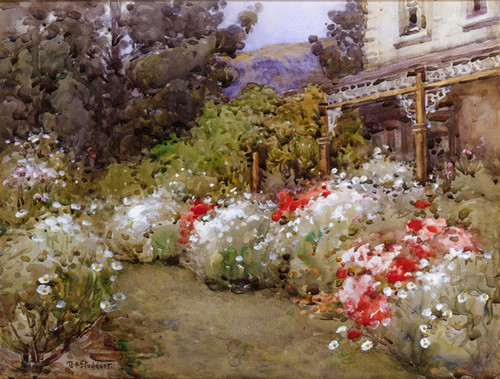
Margaret Stoddart Godley House, Diamond Harbour c.1913. Watercolour. Purchased with assistance from the Olive Stirrat Bequest 1990

Margaret Stoddart View of Lyttelton from Godley House c.1913. Watercolour. Collection Shirley Intermediate School
